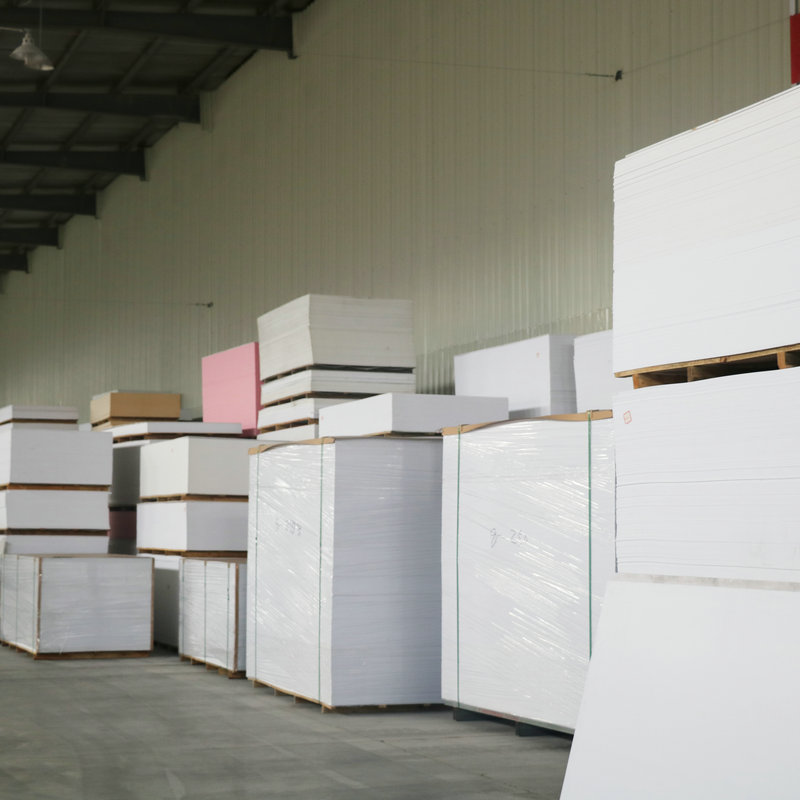Laminated PVC foam board is a composite material that features a PVC foam core laminated with a decorative face layer, usually made from PVC film. This combination provides a lightweight yet strong board suitable for a variety of applications. There are two main types: indoor grade and outdoor grade. Interior-grade laminated PVC foam board is designed for use in protected environments and is aesthetically pleasing and cost-effective. In contrast, outdoor-grade laminated PVC foam board can withstand harsh environmental conditions such as UV exposure, rain and snow, ensuring durability and longevity in outdoor applications.
Outdoor testing indoor grade laminated PVC foam board
To evaluate the suitability of indoor grade laminated PVC foam panels for outdoor use, customers in Wisconsin, USA, conducted comprehensive testing. Testing involves placing the boards in an outdoor environment for extended periods of time, specifically 8 and 18 months. Test conditions include exposure to typical weather elements such as rain, UV rays and snow.
During the testing phase, several key observations were made:
Base material PVC foam board performance:
The core of the PVC foam board that serves as the basis of the structure remained intact throughout the testing period. There are no visible signs of aging, deterioration or disintegration, indicating the substrate is strong and durable in all weather conditions.
Glue Lamination:
The lamination process, which bonds decorative surfaces to a PVC foam core, continues to perform well. The adhesive layer holds the PVC film securely in place without any noticeable delamination or failure. This indicates that the lamination method used is effective in maintaining the bond between the layers.
Surface material properties:
The most important problem observed was the PVC film surface layer. Some problems have arisen with wood grain films designed to provide a decorative effect. It is worth noting that with light scratching, the surface starts to peel and separate. Additionally, the appearance of wood grain patterns can change over time. Both the dark gray and beige wood grain samples showed slight fading, while the light gray wood grain samples showed more severe fading. This suggests that PVC films are not durable enough for long-term exposure to environmental stressors such as UV radiation and moisture.
Laminated PVC foam board
Left: Sample after 8 months of outdoor exposure
Right: Sealed samples stored indoors for 8 months

light gray wood grain sample
Laminated PVC foam board
Dark gray wood grain sample
Laminated PVC foam board
Beige wood grain sample
In summary, while indoor-grade laminated PVC foam boards perform well in terms of structural integrity and adhesion, the surface layer cannot effectively withstand outdoor elements. This highlights the need to use outdoor-grade laminated PVC foam boards in applications exposed to harsh environmental conditions to ensure better longevity and performance.
Why indoor grade PVC foam board is not suitable for long-term outdoor use
Interior grade laminated PVC foam board is designed for environments protected from harsh weather conditions. Its main application is in indoor environments where factors such as UV exposure, rain and extreme temperatures are minimal. However, test results revealed several key issues that render indoor-grade laminated PVC foam boards unsuitable for long-term outdoor use:
1. Problems with PVC film layer
The most significant problem observed was with the PVC film surface layer. This decorative layer is intended to provide an attractive finish, but it is not designed to withstand the rigors of outdoor conditions. PVC films begin to degrade when exposed to UV rays, rain, and snow. The film shows signs of peeling and peeling, and the woodgrain pattern is noticeably faded. The degree of fading varies with the color of the film. The lighter the color, the more serious the fading. This degradation compromises the aesthetic qualities and protective functions of the board.
2. The importance of using the correct grade of materials
Choosing the right grade of laminated PVC foam board is critical to ensuring performance and longevity in a given environment. Interior grade materials are not designed to withstand prolonged exposure to environmental stresses such as UV radiation and moisture. For outdoor applications, it is necessary to use outdoor-grade laminated PVC foam board, which is specially formulated to resist weathering, UV damage, and moisture penetration. This ensures that the material maintains its structural integrity and visual appeal over time, making it a more reliable choice for outdoor use.
In summary, while interior-grade laminated PVC foam board performs well in a controlled indoor environment, its surface layer cannot withstand outdoor conditions, leading to issues such as peeling and fading. For applications exposed to the elements, it is recommended to choose outdoor-grade laminated PVC foam board to ensure durability and long-term performance.
Post time: Aug-23-2024